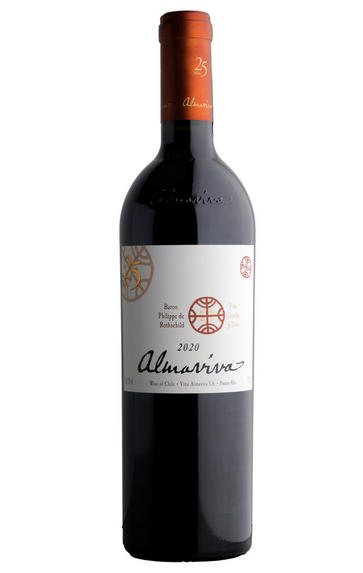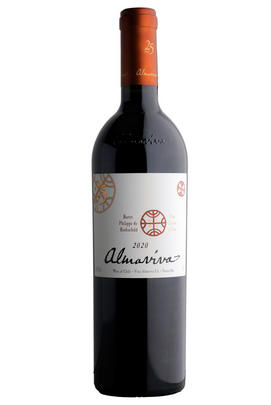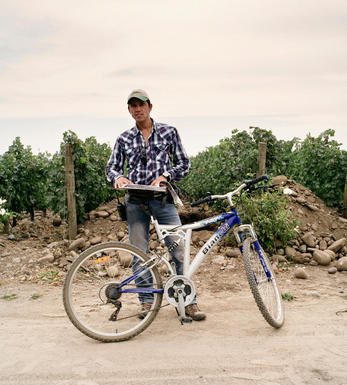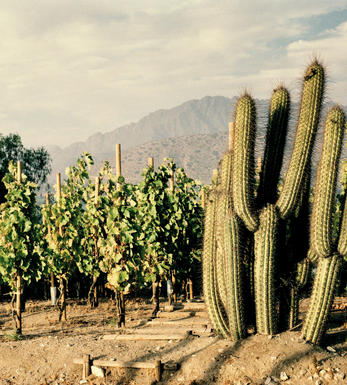
2020 Almaviva, Maipo Valley, Chile

Critics reviews
Drink 2023 to 2035
Jane Anson, Inside Bordeaux (August 2022)
2020 was exceptionally dry, with 75% less rain than usual in the period between May and September, which resulted in an earlier harvest to produce a 2020 Almaviva with 68% Cabernet Sauvignon, 24% Carmenère (from Peumo), 6% Cabernet Franc and 2% Petit Verdot, so with no Merlot this time. The process was as careful as possible, without using any bombs, doing manual and optical sorting of the grapes, pressing in small vertical presses and aging of 20 months in French oak barrels, 73% of them new and the rest second use. The wine reached good ripeness with 14.9% alcohol. It still shows the effect of the élevage a bit, with abundant notes of sweet spices, a creamy touch and some smoke. I tasted it next to the 2019, and the wines have a very similar aromatic palette with a clear note of baked peppers. What was amazing in 2020 was that they harvested the Carmenere almost five weeks earlier than they normally would, and the result is not a green wine at all. As in all dry years, the wines show a little more tannic, a little in the style of the 2017—but the 2020 has more tension than the 2017, and the 2017 was more powerful and with a bigger tannic structure. The 2019 had more volume than the 2018, and the 2020 is closer to the 2019 than the 2018. 200,000 bottles produced. It was bottled during the second half of February 2022.
Drink 2024 - 2036
Luis Gutiérrez, Wine Advocate (Aug 2022)
Fresh and deep nose, full of blueberries, minty cassis, mussels, cigars, dark spice and roasted sesame oak, which will need a year or two to fully integrate. A medium-to full-bodied Almaviva with supple, silky tannins and a wealth of black and blue fruit that provides a lot of charm now. Voluptuous and flattering on the palate, hallmarked by its tension and taut texture. Very long. This is the 25th anniversary bottling. 68% cabernet sauvignon, 24% carmenere, 6% cabernet franc and 2% petit verdot. Drinkable now, but better from 2024.
James Suckling, jamessuckling.com (May 2022)
About this WINE

Almaviva
Almaviva was established in 1996 by Baron Philippe de Rothschild of Château Mouton-Rothschild and Concha y Toro. Their aim was to create the first Bordeaux Grand Cru Classé equivalent in Chile. With 40 hectares of Concha y Toro's best Puente Alto vineyards being dedicated to the task and the steady hand of Patrick Leon (winemaker at Mouton and Opus One), the results have been nothing short of spectacular.
Located in the Maipo Valley, in Chile's central zone, Puente Alto was recognized over twenty years ago as offering ideal conditions for growing the Cabernet Sauvignon grape. It is here that 85 hectares have been reserved exclusively for Almaviva.
Characteristic features of Puente Alto include its stony soil, cold, rainy winters, and the hot days and cool nights of its summers. The Almaviva vineyard is tended with meticulous care from pruning to harvest. A revolutionary underground drip irrigation system has been installed, making it possible to deliver the precise amount of water that each vine needs with a constant concern for quality.

Maipo
Maipo Valley, the northernmost within Central Valley, is one of Chile's most prominent wine regions. It is located east of San Antonio and Casablanca Valley and north of Rapel Valley, and is nestled between two mountain ranges, the Andes and the Coastal Mountains, with Chile's capital city, Santiago, sitting in the middle.
Maipo is renown for its exceptional Cabernet Sauvignon, ripe, subtle, spicy and complex with its signature, powerful eucalyptus and blackcurrant flavours. It amounts for over 60% of the regions 10,000ha. Merlot, Chardonnay and Carmenere are also important.
Maipo plays host to several major, quality Chilean wine companies, including Almaviva, Concha y Toro, William Fevre, Santa Rita, De Martino

Cabernet Sauvignon Blend
Cabernet Sauvignon lends itself particularly well in blends with Merlot. This is actually the archetypal Bordeaux blend, though in different proportions in the sub-regions and sometimes topped up with Cabernet Franc, Malbec, and Petit Verdot.
In the Médoc and Graves the percentage of Cabernet Sauvignon in the blend can range from 95% (Mouton-Rothschild) to as low as 40%. It is particularly suited to the dry, warm, free- draining, gravel-rich soils and is responsible for the redolent cassis characteristics as well as the depth of colour, tannic structure and pronounced acidity of Médoc wines. However 100% Cabernet Sauvignon wines can be slightly hollow-tasting in the middle palate and Merlot with its generous, fleshy fruit flavours acts as a perfect foil by filling in this cavity.
In St-Emilion and Pomerol, the blends are Merlot dominated as Cabernet Sauvignon can struggle to ripen there - when it is included, it adds structure and body to the wine. Sassicaia is the most famous Bordeaux blend in Italy and has spawned many imitations, whereby the blend is now firmly established in the New World and particularly in California and Australia.


Buying options
Add to wishlist
Description
Fresh and deep nose, full of blueberries, minty cassis, mussels, cigars, dark spice and roasted sesame oak, which will need a year or two to fully integrate. A medium-to full-bodied Almaviva with supple, silky tannins and a wealth of black and blue fruit that provides a lot of charm now. Voluptuous and flattering on the palate, hallmarked by its tension and taut texture. Very long. This is the 25th anniversary bottling. 68% cabernet sauvignon, 24% carmenere, 6% cabernet franc and 2% petit verdot. Drinkable now, but better from 2024.
James Suckling, jamessuckling.com (May 2022)
wine at a glance
Delivery and quality guarantee